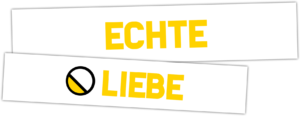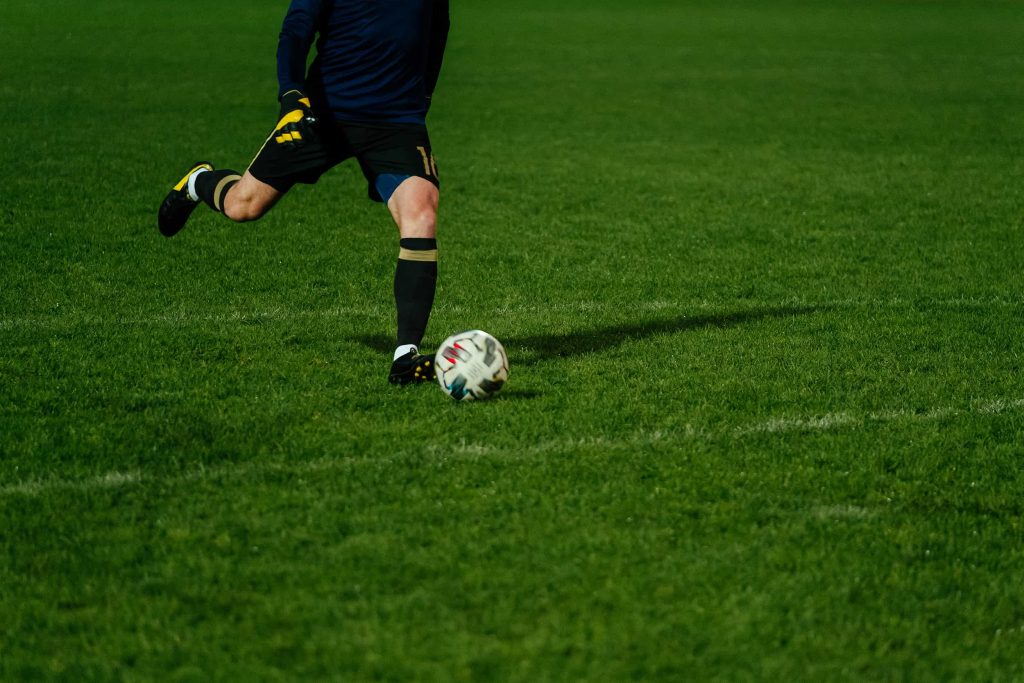Dortmund four, Stuttgart zero. The boys in black and yellow pulled off another impressive win on the weekend, thanks to some slick attacking football and excellent finishing. Stuttgart came into this game with a new coach as Markus Weinzierl made his debut at the Mercedes-Benz Arena in place of Tayfun Korkut. Korkut, having overseen a string of poor results this season, was relieved of his duties. This made for an entertaining narrative ahead of kick-off as the best team thus far this season, came up against the team at the bottom of the table. Needless to say, Dortmund did what they were expected to do and duly thrashed their hosts with goals from Jadon Sancho, Marco Reus, Paco Alcacer and Maximillien Phillip. Although Dortmund were in control for the majority of the game, the game had an interesting dynamic from a tactical point of view. So read on, and enjoy the piece about what was yet another quality Bundesliga game.
Lineups:
Stuttgart (4-3-3): Zieler; Maffeo, Baumgartl, Pavard, Insua; Ascacibar, Castro, Gentner; Thommy, Gomez, Gonzalez
Borussia Dortmund (4-2-3-1): Burki; Pisczcek, Diallo, Zagadou, Hakimi; Witsel, Delaney; Sancho, Reus, Larsen; Alcacer
Dortmund’s Slow Build-Up Creates Space In Behind Stuttgart’s Midfield Line:
Dortmund’s use of slow build-up play and quick transitions into attack has been the main feature of their attacking play this season. This tactic has allowed them to exploit teams who lack coordination and compactness while pressing. Stuttgart coming into this game having the joint 3rd worst defensive record in the Bundesliga…already a sign that they were going to have trouble containing Dortmund’s so far efficient (and lucky), attack.
The first goal was scored only two minutes after kick-off through Sancho. Pablo Maffeo was caught out of position as Dortmund regained the ball in midfield before Larsen was put through on the left flank. His run attracted both Baumgartl and Ascacibar (Stuttgart’s holding midfielder) which left space in midfield for Reus to run into and receive a pass from Larsen. Reus’s unsuccessful cross was picked up by Sancho whose shot was deflected into the goal for the opener. 1-0 Dortmund.
The opening goal set the tone for the game and it highlighted how important the space in behind Stuttgart’s midfield was to Dortmund. Dortmund have thrived this season by drawing the oppositions forward and midfield lines forward and attacking that area incisively. The pace, skill and combination play between their front four allows them to make the most of the space provided to them.
Stuttgart’s defensive strategy was clearly to disrupt Dortmund’s build-up by pressing high or to at least slow down their progression by setting up in a midfield block but neither attempt worked. Stuttgart used a space-oriented zonal marking system, looking to press the ball carrier and congest the space around him, thus limiting his pass options. When they had no access to the ball, they were more passive and organised themselves into a midfield block. This is where the first problem for Stuttgart lay. As a team, they looked unsure as to when they had to transition to a high press from their more passive mid-block organisation or when to retreat into passive mode when they lost access to the ball during a high press. This played right into the hands of Dortmund who found ways to bypass them while under pressure or alternatively, stretch the Stuttgart mid-block and combine to take advantage of the open gaps when the lack of pressure allowed them to circulate the ball into wide areas.

The positioning and movement of Dortmund’s players was another problem that Stuttgart faced defensively. Upfront, Paco, Sancho and Larsen all did a good job of pinning back the opposing backline while Reus floated in behind the midfield line. Witsel and Delaney both played deep in midfield but would position themselves at different heights. The key to creating space to use to progress was the width that the fullbacks provided and the positioning of Reus. During the build-up, Dortmund made good use of backwards and sideways passes to create space horizontally and vertically. Once they found space they would quickly combine and progress past Stuttgart’s lines of pressure and transition directly into attack. The different heights of Witsel and Delaney and the ball oriented positioning of Reus created staggering and triangulation allowing their combination play to come off quickly and smoothly. Once in behind the midfield line, Dortmund’s forward would stream forward, moving into open channels, playing one-two combination’s and this meant that they created many good opportunities throughout the first half. The width of Sancho and Larsen also opened up channels further up the field – another way in which their positioning created space in dangerous areas. By the 24th minute, they were 3-0 up and the game seemed to have already reached its conclusion.

Stuttgart In Possession:
Stuttgart’s plan in attack was to create chances using the classic ‘route one’ style of play. Their tactic was to play long passes from the back into their taller players; Mario Gomez, who played at centre-forward and Gentner who would make runs from deep. These players would either hold up the ball, play it wide and progress or head the ball on for the wingers Gonzalez and Thommy to latch on to (using their pace) and continue the attack. Because Dortmund dominated possession and because they rarely conceded space while organised in their mid-block, this tactic only came off a few times. That was when Stuttgart saw an opportunity to counter-attack immediately after Dortmund lost possession in advanced areas. They were never intent on playing out the back and when they did have possession, Dortmund found it easy to regain the ball. There was no structure that supported passing and movement sequences to create space. Given the pace of their wingers and Gomez’ aerial ability, they could’ve done more to focus the progression of their attacks down the wings. From there they would be able to create opportunities from crosses, just like they did in the 2nd half. But the high pressing Dortmund executed forced long balls which they won more often than not allowing them to restart their slow build-up game.




2nd Half: Stuttgart Dominate Opening 10 Minutes Thanks To Change In Formation
Markus Weinzierl changed Stuttgart’s formation to a 3-5-2 and in doing so replaced Castro with Badstuber who slotted into the centre of the back three. The change of shape gave them greater numbers in midfield and an extra man at the back, allowing them to break down Dortmund’s midfield block through combination play with a focus on progressing in wide areas. The extra man in defence meant that Dortmund no longer high pressed as their main defensive tactic and were mainly organised in their midfield block. This was dangerous as Stuttgart’s extra man in the backline could simply dribble upfield, attract a marker thus creating a free man elsewhere. Pavard, at left centre-back, was the main protagonist near the left flank, linking up very well with Insua whose advanced positioning (now as a wingback) created a problem for Dortmund’s wingers.

Sancho and Larsen now had to choose between pressing the ball carrying centreback and risk leaving the wingbacks 1on1 with their fullbacks or maintaining their positioning, defending using their cover shadows to block passing lanes into the fullbacks. The second approach was futile as the extra man at the back dribbling into midfield pretty much forced them out of position.






Stuttgart began the 2nd half with incredible intensity pressing and counter-pressing with conviction as well as the defensive cover within their shape that lacked in the first half. They also attacked with more speed and aggression, especially down the left flank. Insua was brilliant in the opening ten minute period constantly making attacking runs and getting the ball into the box. Stuttgart ended up having five quality shot opportunities during this period but a combination of poor finishing and Burki’s good saves meant that they couldn’t even get one goal back.
Stuttgart’s Intensity Drops, Dortmund Find It Difficult To Break Through The Back Three and Both Teams Struggle For Control:
Stuttgart’s change to a back three meant that all of the central channels that Dortmund used to create chances were now all occupied by Stuttgart’s backline. In front of them was Ascacibar who sat deep during their attacks in anticipation of the counter-attack. That’s not to say that Dortmund struggled to break through. They did so several times. However, they constantly lost possession near the final third when the forwards made key passes that were easily intercepted by Stuttgart’s backline. In other instances, they were diverted towards wide areas, allowing Stuttgart’s wingbacks and advanced midfielders to drop back and set up in a low block before waiting for an opportunity to win the ball back. Dortmund were restricted to shots from range and this created a period where possession changed constantly.
With 15 minutes to go, Stuttgart’s intensity dropped completely and this affected their ability to counter-attack too. Dortmund could now control possession again, with Stuttgart defending ever deeper. Pulisic had a great chance to add another goal to the scoreboard but he hesitated for a moment and his eventual shot was poorly executed and went wide. However in the 84th minute after a drained Stuttgart side were pulled out of position during one of Dortmund’s patient build-up, including Pavard who tried to cover for Ascacibar in midfield. Witsel and Pulisic combined before the American put Max Phillip through to score the fourth goal and put the game to bed. Yet again Stuttgart were punished for their inability to press timeously and as a unit.
Conclusion:
At the end of the match, few could have claimed that the final score came as a surprise, especially considering the form of the two teams coming into this fixture. Dortmund’s clever ball circulation allowed them to take advantage of Stuttgart’s lack of compactness and coordination. Stuttgart’s structural change and increased intensity allowed them to defend better and create more chances in the opening 10 minutes. Unfortunately for them, they failed to score and after their intensity dropped the game effectively ended. Pulisic scored their fourth and final goal to cap off another great performance to extend Dortmund’s unbeaten run. I’m still not convinced that Dortmund have what it takes to sustain their high levels of performance over the season because of their inability to break down organised opponents. Atletico Madrid will pose such a problem on Wednesday (in the Champions League) and it’ll be interesting to see what solution Favre will have in order to help the team break down one of the world’s most solid defences. Read more about what I had to say last week on Lucien Favre’s reign so far here, to understand a bit more about the team’s problems in possession. At the moment though, I can’t see a win for Dortmund against Atletico. Maybe a draw at best. I predict it’ll be the team’s first loss of the season, but with the attacking power of Dortmund’s front four, the game might just be decided by a moment of individual brilliance. It’s going to be a fascinating clash.



